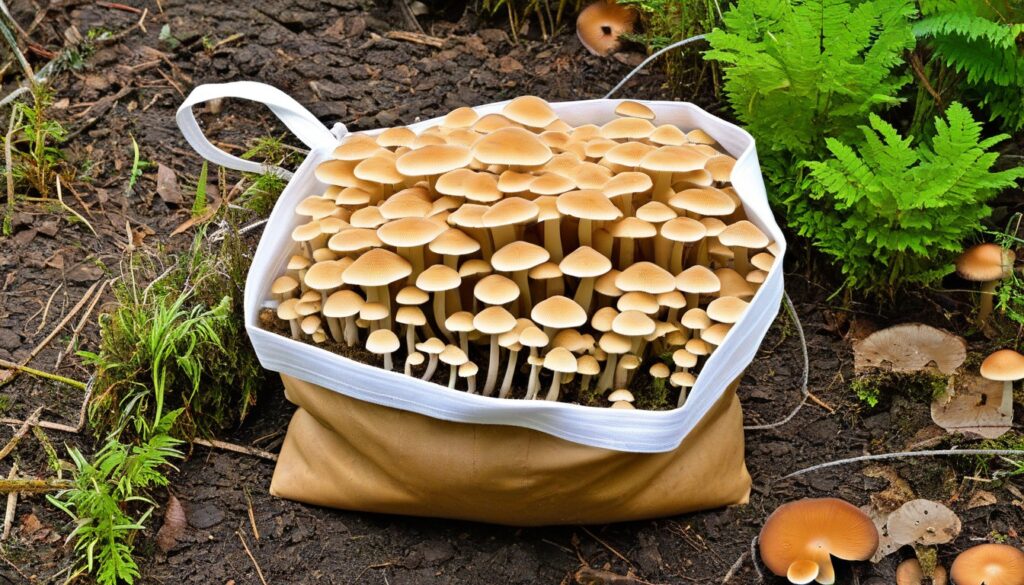If you’re looking for a fun and rewarding gardening activity, growing mushrooms in a bag is a great option. Not only is it easy and affordable, but it also allows you to enjoy the delicious, earthy taste of fresh mushrooms right from your own home. Whether you’re a seasoned gardener or just starting your mushroom cultivation journey, this all-inclusive guide will equip you with the knowledge and tools you need to succeed.
Key Takeaways:
- Learn everything you need to know to grow mushrooms in a bag.
- Discover the different types of mushrooms and their growth requirements.
- Gather all the necessary supplies to get started on your mushroom cultivation journey.
- Follow our expert tips for preparing and maintaining the bag and substrate.
- Monitor mushroom growth, troubleshoot issues, and harvest your homegrown mushrooms for fresh and delicious meals.
Understanding Mushroom Growing Basics
Welcome to the world of mushroom growing! Before you start your mushroom cultivation journey, it’s essential to understand the basics of mushroom growing. Growing mushrooms at home is a fascinating process that requires knowledge, skill, and patience. In this section, we’ll cover the mushroom growing basics.
The Different Types of Mushrooms
Mushrooms come in all shapes, sizes, and colors. The three main types of mushrooms used for cultivation are:
- Button Mushrooms: Also known as white mushrooms, they are the most commonly grown mushrooms worldwide.
- Oyster Mushrooms: These mushrooms are known for their delicate flavor and distinct, fan-shaped caps. They grow rapidly and are relatively easy to cultivate.
- Shiitake Mushrooms: These mushrooms have a meaty texture and a rich, smoky flavor. They are popular in Asian cuisine and are one of the most commonly cultivated mushrooms worldwide.
There are many other mushroom species, including portobello, cremini, enoki, and more. Each mushroom variety has unique growing requirements and characteristics that you should consider before starting your growing project.
The Growth Requirements of Mushrooms
Like any other living organism, mushrooms have specific growth requirements. The three essential factors for mushroom growth are:
- Temperature: Most mushrooms thrive in a temperature range of 55-65°F (12-18°C).
- Humidity: Mushrooms require high humidity levels, around 70-90%, to grow successfully.
- Substrate: The substrate is the material on which the mushroom grows. The substrate should be nutrient-rich and provide the right balance of moisture and air circulation.
The Benefits of Growing Mushrooms at Home
There are many benefits to growing mushrooms at home. Here are some of the most prominent benefits:
- Homegrown mushrooms are fresher and tastier than store-bought mushrooms.
- Growing mushrooms at home is a sustainable practice that reduces your carbon footprint.
- Mushroom cultivation can be a fun and rewarding hobby.
- Growing your own mushrooms gives you control over the quality of the mushrooms and the growing process.
“Growing mushrooms at home is a sustainable practice that reduces your carbon footprint.
Now that you understand the basics of mushroom growing, it’s time to choose the right mushroom variety for your bag cultivation project. Let’s explore the different mushroom varieties suitable for bag growing in the next section.
Choosing the Right Mushroom Variety
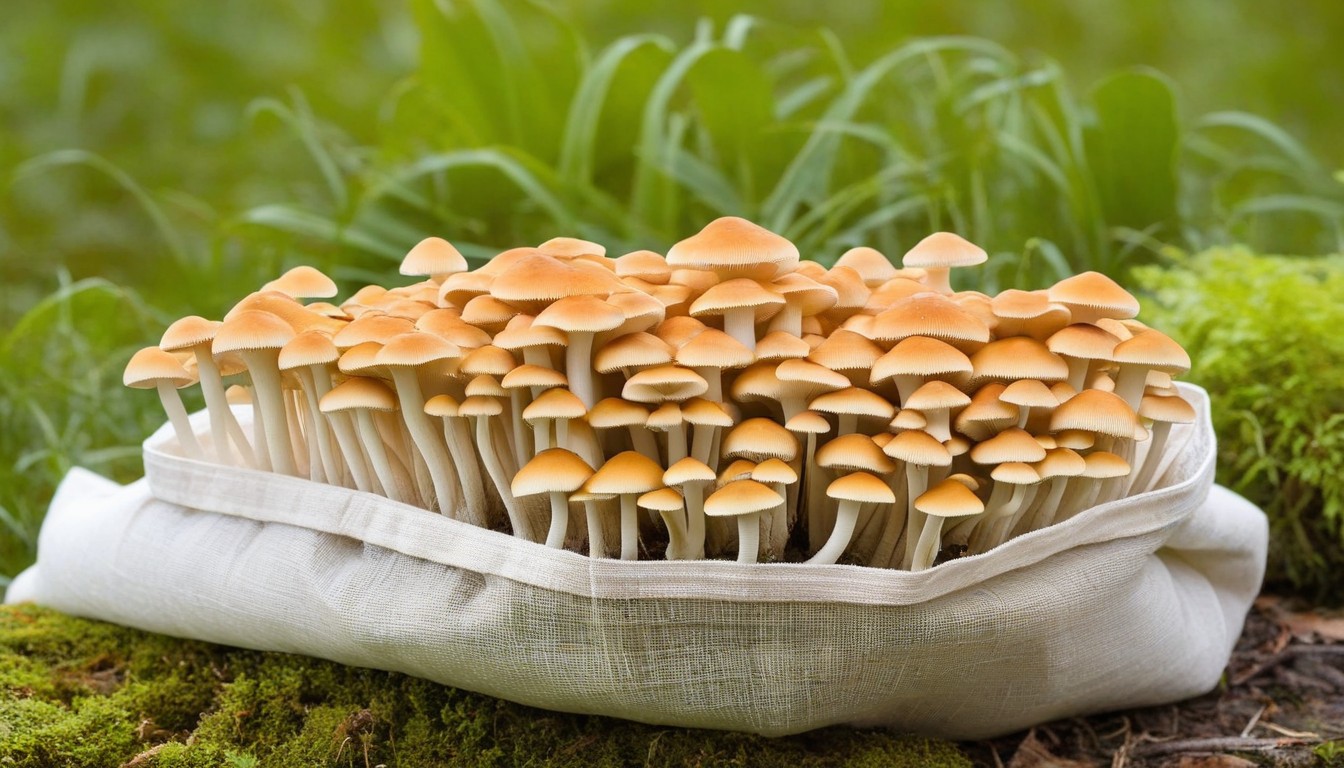
When it comes to growing mushrooms in a bag, choosing the right variety is crucial for a successful harvest. Different mushroom types have varying growth requirements and taste profiles, so it’s important to select a variety that fits your preferences and skill level.
Here are some popular mushroom varieties suitable for growing in a bag:
|
Mushroom Variety |
Taste Profile |
Growth Characteristics |
Availability |
|---|---|---|---|
|
Button |
Mild, nutty flavor |
Easy to grow, fast maturation |
Widely available |
|
Shiitake |
Earthy, smoky flavor |
Grows well in sawdust substrate, slower maturation |
Readily available in stores or online |
|
Oyster |
Mild, sweet flavor |
Fast growing, high yield |
Available in farmers markets or specialty shops |
Keep in mind that some mushroom varieties require more advanced techniques and specialized equipment, so it’s important to do your research and choose a variety that fits your skill level. If you’re new to mushroom cultivation, we recommend starting with a beginner-friendly variety like button mushrooms.
Once you’ve selected your mushroom variety, you can purchase the corresponding spores or spawn from a reputable supplier. Some suppliers even offer pre-inoculated bags for added convenience.
With the right mushroom variety and supplies, you’re well on your way to a successful mushroom cultivation journey.
Choosing the Right Mushroom Growing Supplies
Mushroom cultivation is a delicate process that requires the right tools and materials. Here is a list of the necessary mushroom growing supplies that you’ll need to have before you start growing:
|
Supply |
Description |
|---|---|
|
Mushroom spores or spawn |
These are what will ultimately become your mushrooms. You can purchase these from a reputable supplier or obtain them through a mushroom-growing kit. |
|
Plastic bags |
You’ll need plastic bags to create the growing environment for your mushrooms. Bag size will depend on how much substrate you’re planning to use. It is recommended to use at least a 3-gallon bag for the best results. |
|
Substrate |
The substrate is the material that the mushrooms will grow on. This can include sawdust, straw, or compost. Make sure to choose a substrate that is suitable for your chosen mushroom variety. |
|
Pressure cooker or sterilizer |
You’ll need a pressure cooker or sterilizer to sterilize your substrate and plastic bags before inoculating them with the mushroom spawn. This will help prevent contamination and ensure healthy mushroom growth. |
|
Spray bottle |
A spray bottle filled with water is necessary to keep your substrate moist during the growing process. A humid environment is essential to encourage mushroom growth. |
|
Heat mat |
A heat mat helps maintain consistent temperature, which is crucial for mushroom growth. Make sure to choose a mat with adjustable temperature settings and a thermostat to prevent overheating. |
|
Hygrometer |
A hygrometer measures humidity and ensures that your mushroom-growing environment stays within the desired range. Aim for a humidity level of around 90 percent for best results. |
These mushroom growing supplies can be found online or at your local garden center. Be sure to purchase high-quality materials for the best results. With the right supplies in hand, you’ll be well on your way to growing healthy, delicious mushrooms in a bag.
Preparing the Bag and Substrate
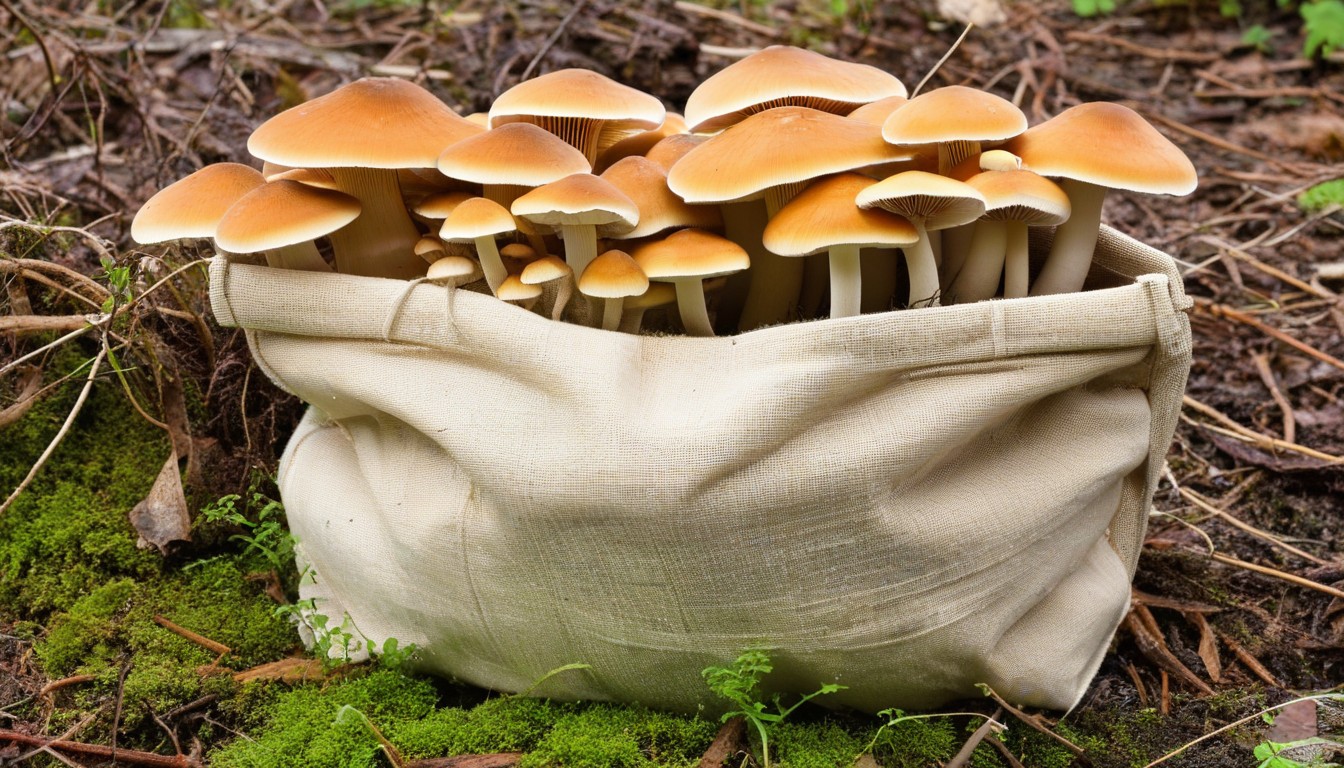
Proper preparation of the bag and substrate is crucial for mushroom growth. In this section, we will guide you through the process of sterilizing the bag, preparing the substrate, and inoculating it with mushroom spawn. We’ll share expert tips on temperature, moisture, and other factors that can affect your mushroom’s success.
Sterilizing the bag
The first step in preparing the bag is to sterilize it to ensure that harmful bacteria or molds do not affect your mushroom. We recommend using a pressure cooker or boiling the bag in water for at least 30 minutes to achieve optimal sterilization. Allow the bag to cool before proceeding to the next step.
Preparing the substrate
The substrate, or growing medium, is the material that provides nutrients for your mushroom. Some common substrates include straw, sawdust, and coffee grounds. The choice of substrate will depend on the type of mushroom you are growing. For example, oyster mushrooms prefer a straw-based substrate, while shiitake mushrooms thrive on a sawdust-based substrate.
To prepare the substrate, first, mix it with water and then pasteurize it by heating it to 160°F for at least one hour. Allow the substrate to cool and then distribute it evenly in the sterilized bag, making sure to leave some room at the top for the spawn.
Inoculating the substrate with mushroom spawn
The final step is to inoculate the substrate with mushroom spawn, which is a culture of mushroom mycelium. You can purchase mushroom spawn online or from a local supplier.
Before inoculating the substrate, make sure your hands and the work surface are clean and sterile. Open the spawn bag and spread the spawn over the substrate evenly. Use a spoon or your hands to mix the spawn with the substrate, making sure that it is evenly distributed.
Once the substrate is inoculated, seal the bag with a twist tie or heat sealer. Make a few small holes in the bag to allow for proper airflow.
Expert Tip: It’s important to maintain a high level of cleanliness throughout the substrate preparation process. Wear gloves, disinfect all equipment, and work in a clean environment to reduce the risk of contamination.
Bag Incubation and Maintenance
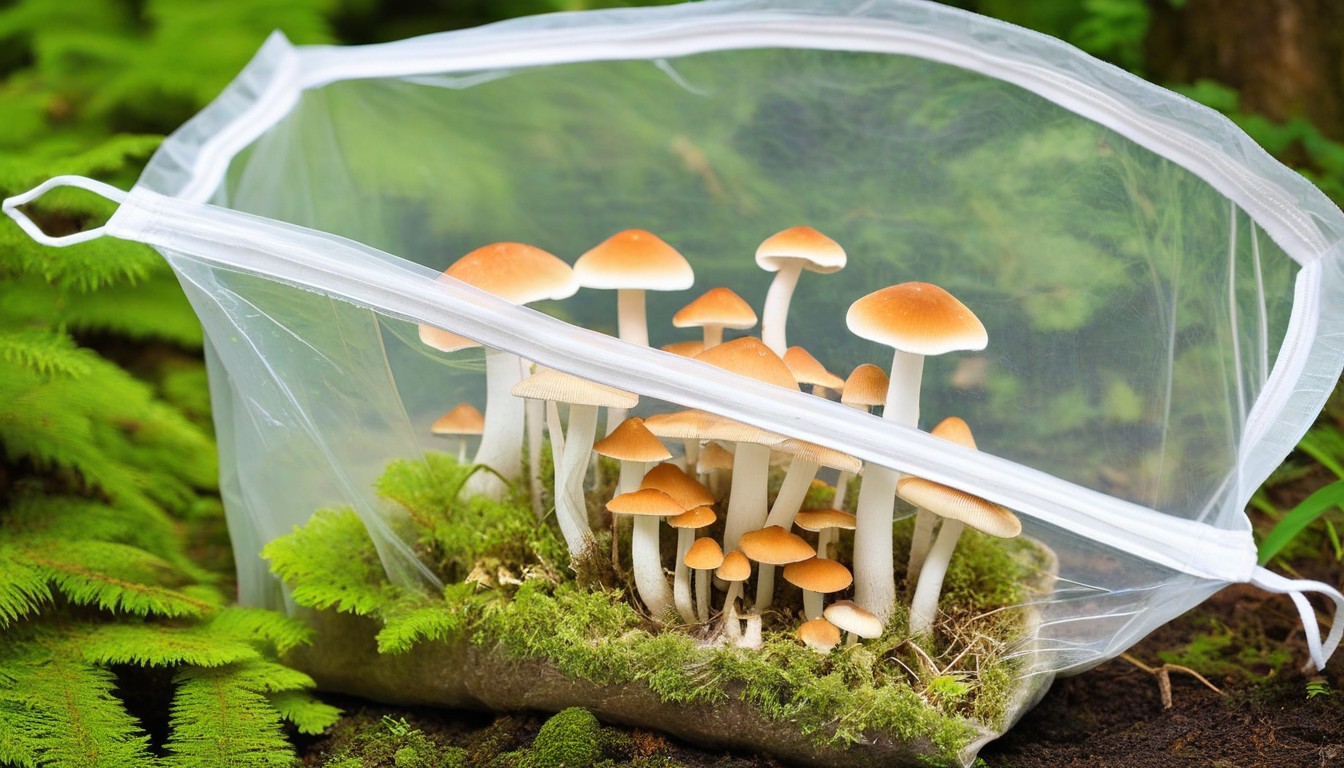
Once you’ve inoculated the substrate with mushroom spawn, it’s time to incubate the bag. During this stage, you’ll need to maintain certain conditions to encourage mycelium growth. Here are some tips for bag incubation and maintenance:
Location
Choose a location that’s out of direct sunlight and free from drafts. The ideal temperature range for incubation is between 65-75°F (18-24°C). Avoid temperatures above 80°F (27°C), as this can slow down growth or even kill the mycelium.
Humidity
Humidity is crucial during incubation. The substrate needs to be moist but not wet. You can achieve the ideal humidity level by misting the bag daily with clean water. Alternatively, you can place a humidity tent over the bag to maintain moisture levels.
Monitoring
It’s important to monitor the bag daily during incubation. Check for any signs of contamination or mold growth. You should also keep an eye on the temperature and humidity levels. If the bag starts to dry out, mist it with water or add a small amount of water to the substrate.
Timeframe
The incubation period can vary depending on the mushroom variety you’re growing. Typically, it takes between 1-4 weeks for the mycelium to colonize the bag. Once the substrate is fully colonized, you’ll start to see small mushroom pins forming in the bag.
Now that you know how to incubate and maintain your mushroom bag, it’s time to move on to the next stage: monitoring mushroom growth.
Monitoring Mushroom Growth
Once you have inoculated the substrate with mushroom spawn and incubated the bag, it’s time to monitor the growth of your mushrooms. Here are a few important factors to consider:
- Temperature: The ideal temperature range for most mushrooms is between 60-80°F (15.5-26.7°C). Ensure that the bag is kept within this range to encourage proper growth.
- Humidity: Mushrooms require high levels of humidity, usually around 90-95%. You can achieve this by misting the inside of the bag daily with a spray bottle of water.
- Growth rate: The rate of mushroom growth can vary depending on the type of mushroom and growing conditions. Some mushrooms may take several weeks to grow, while others may grow much faster.
- Color and appearance: As your mushrooms grow, they will change color and shape. Keep an eye on their appearance and make note of any changes.
It’s important to monitor your mushrooms regularly and make adjustments as needed to ensure optimal growing conditions. Check on your bag at least once a day to assess the growth and health of your mushrooms.
“Mushrooms require high levels of humidity, usually around 90-95%.”
If you notice any issues during the growth process, such as mold or contamination, take action immediately to prevent further damage. Refer to the Troubleshooting Common Issues section for more information on how to address these issues.
Mushroom Growth Chart
|
Mushroom Variety |
Growth Time (Days) |
Harvest Time (Days) |
|---|---|---|
|
Button Mushroom |
14-21 |
70-90 |
|
Shiitake Mushroom |
14-28 |
60-70 |
|
Oyster Mushroom |
7-14 |
14-21 |
Use the above chart as a reference for the typical growth and harvest times for common mushroom varieties. Keep in mind that these times can vary based on growing conditions and other factors.
Harvesting and Enjoying Your Mushrooms
Harvesting your homegrown mushrooms is an incredibly satisfying experience. Not only have you witnessed the entire cultivating process, but you also get to enjoy the fruits of your labor. When your mushrooms have reached maturity, they will be ready for harvest.
The harvesting process is relatively simple. Put on a pair of clean gloves and gently twist the mushrooms at the base to separate them from the substrate. If the mushrooms are too difficult to twist, use a clean pair of scissors to cut the base of the stem. Avoid pulling the mushrooms from the substrate as this can damage the delicate mycelium network and impact future crops.
Once you have harvested your mushrooms, it’s time to store, cook, and enjoy them. Here are a few suggestions on how to best savor your freshly harvested mushrooms:
- Sautéed: Heat a tablespoon of olive oil or butter in a pan over medium heat. Add sliced mushrooms and cook for 5-7 minutes until browned and tender. Add salt, pepper, and your favorite herbs for extra flavor.
- Roasted: Preheat your oven to 400°F. Spread whole or sliced mushrooms on a baking sheet and toss with olive oil, garlic, and thyme. Roast for 15-20 minutes until golden brown and crispy.
- Stuffed: Remove the stems from your mushrooms and fill the caps with your favorite stuffing, such as cheese, breadcrumbs, and herbs. Bake in the oven at 375°F for 10-15 minutes until the filling is melted and golden brown.
Remember to clean your mushrooms before cooking by brushing them with a soft brush or wiping them with a damp cloth. Avoid soaking them in water as they are highly porous and can absorb liquid, which can affect their texture and flavor.
With your freshly harvested mushrooms, you can now add them to your favorite dishes, such as pasta, risotto, salads, and soups. Experiment with different flavor combinations and cooking techniques to discover your favorite ways to enjoy your homegrown mushrooms.
Troubleshooting Common Issues
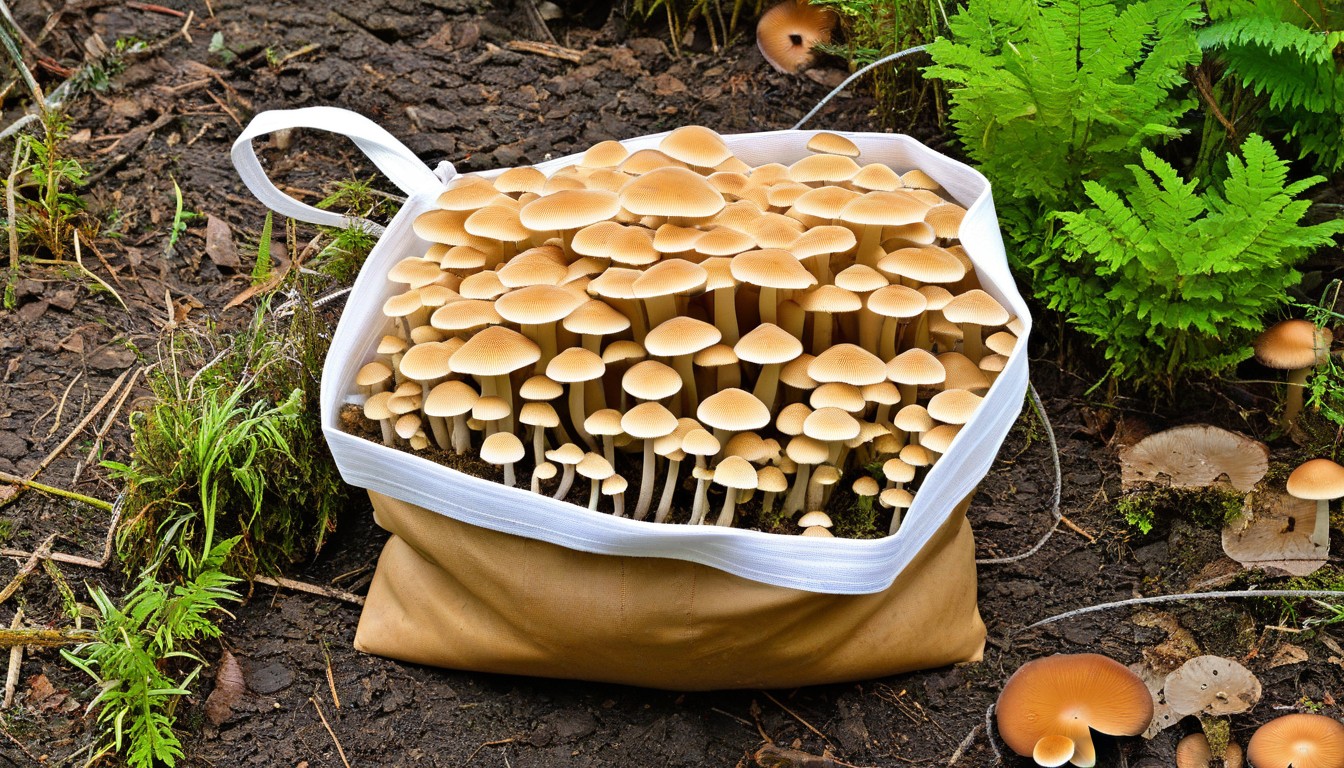
Even with great care, mushroom cultivation can sometimes face issues. Here are some common mushroom growing problems and useful tips to help you overcome them.
Contamination
One of the most common issues in mushroom cultivation is contamination. The presence of bacteria or mold can ruin your entire crop. Contamination can occur due to insufficient sterilization or airborne pathogens.
To prevent contamination, it’s important to keep your work area clean and sterile. Use gloves, a face mask, and a mushroom cultivation kit to minimize the risk of contamination.
If contamination occurs, you may need to discard the bag and start again. Always practice caution when dealing with contaminated bags to avoid spreading the problem to other crops.
Mold
Mold is another common issue in mushroom cultivation, and it can be caused by improper ventilation, high humidity, or poor sterilization practices.
To prevent mold growth, ensure proper ventilation and avoid humidity levels above 70%. Keep the bags in a dry and well-ventilated area. Use a hydrogen peroxide solution to sanitize the growing environment.
If you notice mold growing on your mushroom bag, remove it immediately to prevent it from spreading. Some types of mold can be harmful to humans, so it’s important to take this seriously.
Pests
Pests such as mites and flies can cause damage to your mushroom bag and reduce your overall yield. To prevent pest infestations, keep the growing area clean and free from debris.
If you notice pests in your mushroom bag, remove it immediately and destroy the affected bag. Avoid using chemical pesticides, as they can harm the mushrooms and pose a risk to your health.
Other Issues
Other issues you may encounter during mushroom cultivation include slow growth, low yield, and discoloration. These issues can be caused by various factors, including improper substrate preparation, insufficient nutrient levels, or incorrect temperature.
To address these issues, assess your growing conditions and identify the source of the problem. Make the necessary adjustments and monitor the growth of your mushrooms.
With these handy troubleshooting tips and a little patience, you can overcome common mushroom growing issues and enjoy a successful harvest.
Conclusion
Congratulations on reaching the end of this master guide on growing mushrooms in a bag! By now, you should have a solid understanding of the mushroom growing basics and the necessary supplies, preparation techniques, and incubation and maintenance processes involved.
Remember, choosing the right mushroom variety is crucial for a successful harvest, and monitoring your mushrooms’ growth is essential to identify and troubleshoot any issues.
With a little patience and care, you’ll soon be harvesting your own delicious mushrooms and enjoying the fruit of your labor. Thank you for embarking on this journey with us, and happy cultivating!
FAQ
What is mushroom cultivation?
Mushroom cultivation is the process of growing mushrooms for personal or commercial use. It involves creating the ideal conditions for mushroom growth and providing the necessary nutrients for them to thrive.
Can I grow mushrooms in a bag?
Yes, growing mushrooms in a bag is a popular method for home cultivation. It provides a controlled environment for the mushrooms and makes the process more manageable for beginners.
What are the benefits of growing mushrooms at home?
Growing mushrooms at home allows you to have a fresh supply of this nutritious and delicious food. It is also a sustainable practice and can be a rewarding hobby.
How do I choose the right mushroom variety for bag cultivation?
When choosing a mushroom variety for bag cultivation, consider factors such as taste preferences, growth characteristics, and availability. Some popular options include oyster mushrooms, shiitake mushrooms, and lion’s mane mushrooms.
What supplies do I need to grow mushrooms in a bag?
To grow mushrooms in a bag, you will need mushroom spores or spawn, bags, substrate (such as straw or sawdust), and essential tools like a pressure cooker, thermometer, and spray bottle.
How do I prepare the bag and substrate for mushroom cultivation?
The bag and substrate preparation involves sterilizing the bag, preparing the substrate by mixing it with mushroom spawn, and ensuring the right temperature and moisture levels for successful growth.
What are the ideal conditions for bag incubation?
During the bag incubation phase, mushrooms thrive in a temperature range of 60-75°F (15-24°C) and high humidity levels (around 80-95%). Providing indirect light is also important during this stage.
How do I monitor mushroom growth?
Monitoring mushroom growth involves observing the development of mycelium, the white web-like structure, and ensuring that it is spreading evenly throughout the substrate. It’s also important to keep an eye out for any signs of contamination or mold.
How do I harvest mushrooms?
To harvest mushrooms, gently twist or cut them at the base when they reach the desired size. It’s important to harvest them before the veil underneath the cap breaks open, as this ensures optimal flavor and texture.
How do I store and cook harvested mushrooms?
After harvesting, store mushrooms in a breathable container in the refrigerator. As for cooking, mushrooms can be sautéed, grilled, added to soups or salads, or used in various other culinary preparations.
What should I do if I encounter issues during mushroom cultivation?
If you experience issues such as contamination, mold, pests, or other challenges, refer to our troubleshooting section for helpful tips and solutions to overcome these problems.

